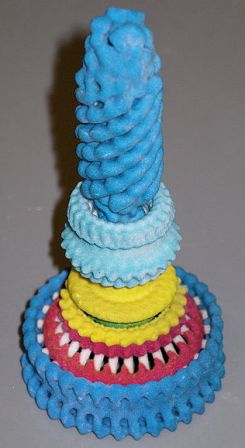- Series:Humans, Transcript English
Luke 8:8
“And other fell on good ground, and sprang up, and bare fruit an hundredfold. And when he had said these things, he cried, He that hath ears to hear, let him hear.”
The electron microscope was developed over 80 years ago and enables us to probe the secrets of God’s creation. One of the most surprising discoveries shows an incredible similarity between those little whips called flagellum – which some microbes use for swimming – and the inside of your ear!
 The electron microscope has shown that there is but one master pattern for all flagella. These tiny threads are always made up of a pair of fibers surrounded by nine protein fibers running inside a tube. It is thought that the contraction of these protein fibers causes the flagellum to move. But though these tiny structures are identical, different creatures use them in different ways.
The electron microscope has shown that there is but one master pattern for all flagella. These tiny threads are always made up of a pair of fibers surrounded by nine protein fibers running inside a tube. It is thought that the contraction of these protein fibers causes the flagellum to move. But though these tiny structures are identical, different creatures use them in different ways.
Inside your ear and the ears of all vertebrates are tiny, hair-like structures that come together in a point, something like an Indian tepee. Each of these structures has on it one projection exactly the same as the microbes’ flagellum. But in this case, its purpose is not to move, but to be moved by sound waves. These structures are hooked up to nerves, and their purpose is to detect sound waves. They are so sensitive, they can provide your brain with many different kinds of information, all of which you finally hear as sound!
Have you used this generous gift of hearing to hear the Word of God today?
Prayer:
Dear Lord Jesus Christ, I give thanks to You for all my senses and abilities and ask that You would, through the teaching of Your Word, help me to make use of them in ways which glorify You. Amen.
Notes:
Margaret Helder, Ph.D., “Marvellous Evidence of Design,” Creation Ex Nihilo, Vol. 9, No. 4, pp. 14-17. Photo: Physical model of a bacterial flagellum. Courtesy of Alan Wolf. Licensed under the Creative Commons Attribution-Share Alike 2.0 Generic license.
